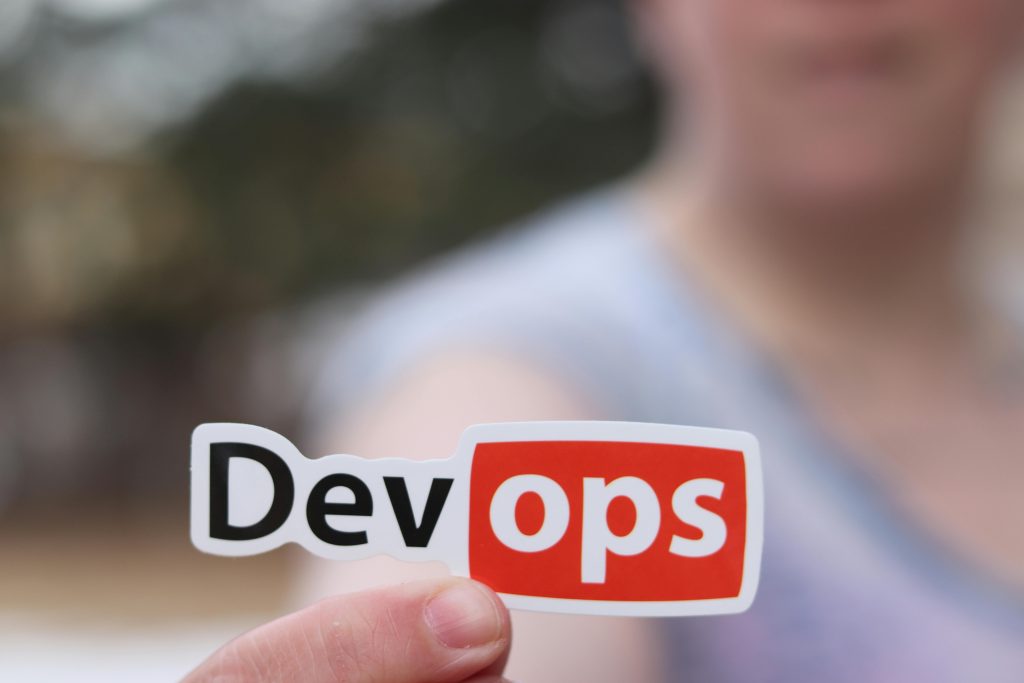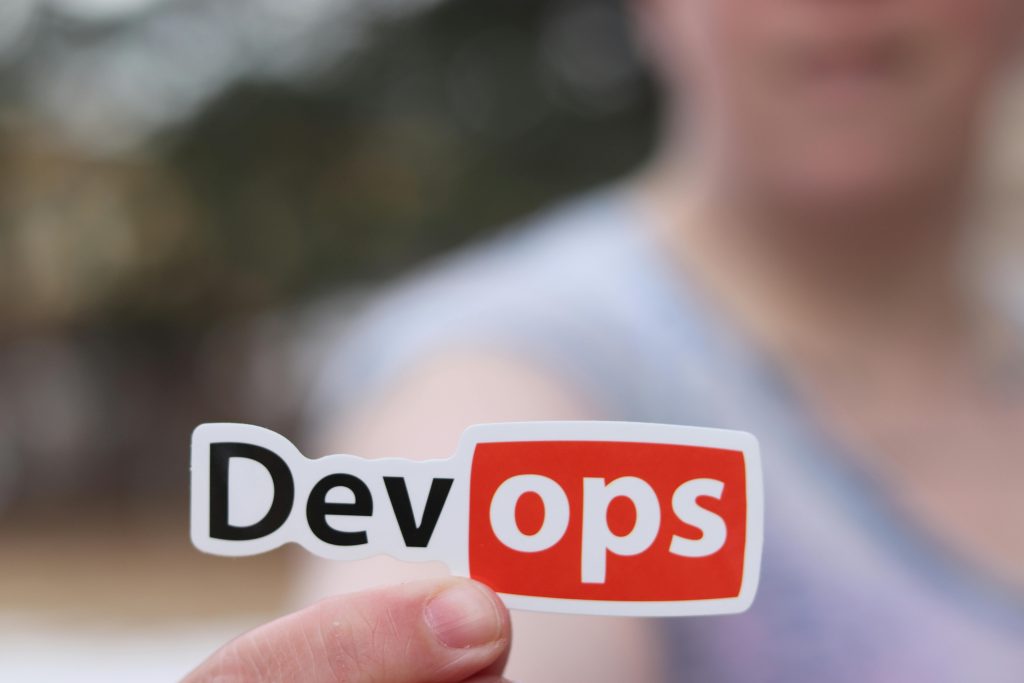Introduction
Choosing between cloud-based and on-premise solutions is one of the most critical decisions an organization faces when designing its IT infrastructure. Cloud computing has surged in popularity due to its flexibility, scalability, and lower upfront costs, while on-premise systems continue to offer organizations maximum control, customization, and data sovereignty. In this post, we’ll dive deep into the benefits of cloud-based versus on-premise deployments, examining factors such as cost, scalability, security, performance, and management. By the end, you’ll have a clear understanding of the trade-offs and how to determine which model aligns best with your company’s goals and technical requirements.

Understanding Cloud-Based and On-Premise Solutions
What Are Cloud-Based Solutions?
Cloud-based solutions host applications, data, and services on the infrastructure of a third-party provider (AWS, Azure, Google Cloud, etc.). Rather than installing software on local servers, your organization accesses resources over the Internet. Key characteristics include:
- Multi-tenant Architecture: Multiple customers share the same physical hardware but run in isolated environments.
- Pay-as-You-Go Billing: You pay for compute, storage, and network usage with little to no upfront capital investment.
- Elasticity: Resources can automatically scale up or down based on demand.
Common cloud services include Infrastructure as a Service (IaaS), Platform as a Service (PaaS), and Software as a Service (SaaS). For example, hosting a web application on AWS EC2 (IaaS), using Azure App Service (PaaS), or subscribing to a cloud CRM tool like Salesforce (SaaS).
What Are On-Premise Solutions?
On-premise solutions require organizations to deploy hardware (servers, storage, networking equipment) within their own data centers or office locations. Software is installed and configured on these machines, and IT teams handle all aspects of maintenance. Key characteristics include:
- Dedicated Infrastructure: Servers and storage are owned and operated exclusively by the organization.
- Capital Expenditure (CapEx): Significant upfront investment in hardware, software licenses, and data center facilities.
- Full Control: Organizations manage every layer of the stack—from physical hardware to operating systems and application code.
Examples include hosting an in-house ERP system on company servers, running a private virtualization environment with VMware, or deploying an on-site database cluster for internal analytics.
Cost Considerations
Upfront Investment and Capital Expenditure
On-Premise:
- Hardware Purchases: You buy servers, networking gear, storage arrays, and possibly redundancy equipment (uninterruptible power supplies, backup generators).
- Licensing Costs: Often involve one-time software license fees or multi-year enterprise agreements.
- Facility Costs: Data center space, cooling, power, and physical security.
- Staffing: Hiring or training system administrators, network engineers, and security specialists.
Because of these investments, total capital expenditure (CapEx) can be high, especially for small or mid-sized companies with limited budgets.
Cloud-Based:
- No Hardware Purchases: Infrastructure is owned by the cloud provider—your organization simply subscribes to services.
- Operating Expenses (OpEx): You pay monthly or hourly based on resource consumption.
- Lower Initial Outlay: Ideal for startups or businesses looking to minimize cash outflow.
However, over time, heavy usage without optimization can lead to unexpectedly high monthly bills. Monitoring consumption and rightsizing instances is essential to control costs.
Operational Expenditure and Pay-As-You-Go
Cloud-Based Pay-As-You-Go
- Flexible Billing Models: Compute instances billed per second or per hour; storage billed per gigabyte per month; network egress charged per gigabyte.
- Cost Visibility: Detailed billing dashboards allow you to track which teams or projects are generating the most cost.
- Autoscaling Savings: Automatically scale down resources during off-peak hours, reducing waste.
On-Premise Ongoing Costs
- Depreciation: Hardware eventually ages out, requiring replacement (typically every 3–5 years).
- Maintenance Contracts: Often undertake yearly maintenance renewals for hardware support and software updates.
- Energy & Facilities: Electricity to power servers and cooling systems can be a significant monthly expense.

When comparing TCO (Total Cost of Ownership) over a 3- to 5-year horizon, cloud often wins for small to medium deployments, whereas very large, steady-state environments sometimes justify on-premise CapEx.
Total Cost of Ownership Over Time
- On-Premise TCO: CapEx + ongoing maintenance + facility costs + staffing. Economies of scale may kick in for very large deployments (e.g., hyperscale colocation), but smaller outfits rarely absorb these overheads as efficiently as cloud providers do.
- Cloud TCO: OpEx only, but includes hidden costs like data egress, third-party managed services, and potential overprovisioning. Properly architecting for cost (rightsizing, using spot instances, leveraging reserved instances) directly influences TCO.
Real-World Analogy:
Think of on-premise as buying a home outright—you pay for the mortgage, utilities, and upkeep. Cloud is akin to renting an apartment—you pay a monthly rent that covers utilities and maintenance, but you have less long-term asset ownership.
Scalability and Flexibility
Elastic Scaling in the Cloud
One of the most celebrated benefits of cloud computing is its ability to scale resources on-demand.
- Auto-Scaling Groups: Configure rules to automatically add or remove compute instances based on CPU usage, memory pressure, or custom CloudWatch/Monitoring metrics.
- Global Load Balancing: Distribute traffic across multiple regions to handle spikes or to improve latency for end users in different geographies.
- Serverless Architectures: Services like AWS Lambda or Azure Functions let you run code in response to events without provisioning servers—perfect for unpredictable workloads.
Benefits:
- Instant Resource Allocation: No waiting weeks to procure and rack new servers.
- Handle Seasonal Spikes: Retailers can spin up additional capacity for holiday shopping surges and spin down after.
- Easily Experiment: Spin up test environments in minutes, then tear them down when done to avoid idle resources.
Scaling On-Premise Infrastructure
Scaling on-premise involves capacity planning and procurement cycles:
- Budgeting Lead Time: You need to forecast demand months in advance, secure budget, issue PO, receive hardware, and configure it—a process that can take 3–6 months.
- Physical Constraints: Limited rack space, power availability, and cooling capacity may eventually cap how much you can scale.
- Underutilization vs. Overcommitment: Often, organizations purchase extra headroom “just in case,” leading to hardware sitting idle. Alternatively, they may under-estimate future growth, and run into capacity constraints mid-cycle.
Analogy:
- Cloud = Elastic Band: It stretches when you pull and snaps back when idle.
- On-Premise = Fixed Elastic: You must decide its length upfront. Changing later requires buying a whole new band.
Security and Compliance
Cloud Security Models and Shared Responsibility
Cloud providers invest heavily in physical security, network protections, and certifications (ISO 27001, SOC 2, HIPAA, GDPR, etc.).
- Shared Responsibility Model:
- Provider’s Responsibility: Securing the underlying infrastructure—physical data centers, hypervisors, network fabric.
- Customer’s Responsibility: Securing data, configuring access controls, patching guest OS, managing encryption keys.
- Built-In Security Services:
- AWS Key Management Service (KMS) or Azure Key Vault for encryption.
- Web Application Firewalls (WAF), DDoS protection (AWS Shield, Azure DDoS Protection).
- Centralized identity and access management (IAM) with fine-grained role policies.
Benefits of Cloud Security:
- Automatic Updates: Underlying hypervisors and networking receive continuous patches.
- Global Compliance Framework: Many providers offer pre-certified compliance templates to simplify audits.
- Advanced Threat Detection: Built-in AI/ML-driven monitoring (e.g., AWS GuardDuty, Azure Defender) helps detect anomalies.
On-Premise Security Control and Responsibility
With on-premise, your security team controls every layer:

- Physical Access: You manage who enters the data center, CCTV monitoring, biometric locks, etc.
- Network Perimeter: Firewalls, IDS/IPS appliances, network segmentation, and VPN concentrators are deployed and maintained in-house.
- OS and Application Hardening: You are fully responsible for patching operating systems, firmware, and applications.
Benefits of On-Premise Security:
- Complete Visibility: You own every bit of your data flow—from NIC to disk. No “black box” abstractions.
- Strict Data Sovereignty: Critical for industries with stringent regulations (e.g., defense contractors, government agencies, certain finance firms).
- Highly Custom Policies: If you need specialized network topologies, air-gapped networks, or custom encryption appliances, on-premise gives you full control.
Performance and Reliability
Availability and Uptime in the Cloud
Major cloud providers commit to SLA guarantees—AWS, Azure, and Google Cloud offer 99.9% or higher uptime for their core services.
- Multi-Region Redundancy: Deploy across multiple availability zones or geographic regions to mitigate localized outages.
- Automatic Failover: Managed load balancers and database services (e.g., Amazon RDS Multi-AZ, Azure SQL Failover Groups) ensure minimal downtime.
- Global Content Delivery Networks (CDNs): Services like Amazon CloudFront or Azure CDN deliver static assets from edge locations to reduce latency for global audiences.
Considerations:
- Network Dependency: If your Internet link goes down, all hosted cloud resources become unreachable.
- Shared Infrastructure: Noisy neighbors (other tenants hogging resources) can occasionally introduce performance variability, though providers offer dedicated instance options to mitigate this.
Performance Control On-Premise
When you control the hardware, you can finely tune for specific workloads:
- Dedicated Resources: No contention from other tenants. Great for latency-sensitive applications (HPC, high-frequency trading, large-scale databases).
- Custom Hardware Specifications: Select specialized GPUs, custom networking (InfiniBand), or storage arrays (NVMe, SAN, NAS) tailored to your performance demands.
- Predictable Performance: Once you benchmark your own hardware, you know exactly how it behaves under load—fewer surprises.
Reliability Factors:
- Redundant Fans, Power Supplies, and RAID Arrays: On-site failover strategies.
- Manual Intervention: In case of hardware failure, IT must physically replace components, which can introduce longer MTTR (mean time to repair) compared to cloud provider-managed hardware swaps.
Maintenance and Management
Vendor-Managed Updates and Patches
Cloud platforms handle many operational tasks behind the scenes:
- Infrastructure Patching: Hypervisors, host OS kernels, networking firmware, and data center environmental controls.
- Service-Level Maintenance: Managed databases, caches, and other PaaS offerings receive automatic updates (e.g., security patches, minor version upgrades).
- Monitoring & Logging Services: Built-in dashboards (CloudWatch, Azure Monitor) let you see resource utilization, set alarms, and trigger automated scaling or incident response.
Benefits:
- Reduced Administrative Overhead: Your IT team can focus on application logic rather than infrastructure maintenance.
- Faster Security Patching: Providers deploy patches across millions of servers at once, minimizing vulnerabilities.
In-House Management and Skilled Staff
On-premise environments demand a skilled IT workforce:
- System Administrators & Network Engineers: Patching OS, firmware updates, backups, and network configurations.
- Database Administrators: Tuning queries, performing index maintenance, and managing replication.
- Security Team: Monitoring intrusion detection systems, analyzing logs, and applying custom security rules.
Challenges:
- Staffing Costs: Hiring and retaining experienced administrators can be expensive.
- Maintenance Windows: Scheduling downtime for patching and hardware upgrades can disrupt critical operations if not properly planned.
Customization and Control
Flexibility in Custom Configurations On-Premise
If your applications demand highly specialized configurations—custom kernels, proprietary hardware accelerators, or legacy software that won’t run in the cloud—on-premise gives you the freedom to tailor every layer:

- Unique Network Topologies: Full control over firewalls, routers, and switches allows you to implement complex segmentation or micro-segmentation.
- Specialized Hardware: Deploy GPUs for machine learning, FPGAs for custom compute, or proprietary appliances for encryption/compression.
- Legacy Application Support: Older applications that require specific OS versions, databases, or licensing models can remain on-premise without compatibility issues.
Cloud Limitations vs. Managed Services
While many clouds offer “bring your own custom AMI/VM” flexibility, certain constraints exist:
- Limited Kernel Access: You cannot modify the hypervisor or host OS; you’re confined to what the provider exposes in the VM image.
- Managed Service Abstractions: Databases like AWS Aurora or Azure Cosmos DB optimize for general use cases, but if you need deep database engine modifications, you often must run your own VM-based database instance.
- Vendor Lock-In Concerns: Advanced PaaS services can introduce proprietary APIs—migrating those workloads to another provider or back-on-premise can be complex.
Disaster Recovery and Business Continuity
Cloud-Based DRaaS Solutions
Many organizations leverage cloud as part of their disaster recovery (DR) strategy—replicating critical workloads to a backup region or account.
- Automated Replication: Services like AWS Disaster Recovery (CloudEndure) or Azure Site Recovery continuously replicate on-premise VMs to the cloud.
- Low Recovery Time Objective (RTO): In a failover event, spin up pre-configured instances in a secondary region within minutes.
- Pay-for-DR-Resources-Only-When-Triggered: You typically only pay for storage to hold replicated snapshots, not for idle compute resources.
Benefits:
- Cost-Effective DR: No need to build and maintain a secondary data center; you simply replicate to the cloud.
- Geographically Diverse: Leverage provider’s global footprint to keep DR copies far from the primary site (protection from regional disasters).
On-Premise DR Strategies
Organizations with strict data sovereignty or latency requirements may invest in second physical sites or co-location spaces:
- Active-Passive Data Centers: Maintain a hot standby environment in another facility, with synchronous data replication.
- Tape Backups & Off-Site Storage: Traditional approach—nightly backups written to tape, then physically transported or shipped to a vault.
- Manual Failover Processes: Will require orchestrated procedures, on-call staff, and potentially hours or days of downtime during failover.
Challenges:
- High Capital Costs: Purchasing and maintaining two full data center sites can be prohibitively expensive.
- Complexity: Testing DR plans regularly, ensuring data consistency, and managing staff shifts across multiple locations.
Collaboration and Accessibility
Remote Access and Collaboration Tools in the Cloud
Cloud solutions naturally support distributed teams and remote work:

- Anywhere Access: Users can sign in from any device with an Internet connection—no need for VPN if the application is built securely for the web.
- Integrated Collaboration Suites: Cloud providers often bundle services like online document editing, file sharing, and virtual meetings (e.g., Google Workspace, Microsoft 365).
- Real-Time Collaboration: Multiple users can concurrently edit documents, spreadsheets, or code repositories; changes sync instantly without manual file transfers.
Benefits:
- Reduced IT Friction for Remote Workers: No complex firewall rules or VPN tunnels needed for basic access.
- Consistent Experience: Updates roll out instantly to all users—no local client patches required.
On-Premise Accessibility Constraints
When hosting everything behind corporate firewalls, enabling secure remote access can be more involved:
- VPN Dependencies: Users must install and maintain VPN clients; network performance can suffer if many users tunnel through a single VPN concentrator.
- Fixed IP Policies: If your services are tied to internal IP ranges, you may need to set up reverse proxies or split DNS solutions to allow external name resolution.
- Collaboration Tool Licensing: If you host your own file-sharing or collaboration servers, you shoulder the burden of patching, scaling, and securing those services.
Making the Right Choice for Your Business
Key Factors to Consider
- Budget Constraints & TCO
- Startups/SMBs: Lean toward cloud for minimal upfront costs and operational flexibility.
- Large Enterprises: Conduct detailed TCO models; if predictable, high-volume compute is needed, on-premise baseline costs may compare favorably over time.
- Compliance & Data Sovereignty
- Highly Regulated Industries: On-premise may be mandatory if local regulations prohibit external hosting.
- Cloud Regions: Many providers now offer GovCloud or region-specific data centers to satisfy data residency requirements.
- Performance & Latency
- Latency-Sensitive Applications: Consider on-premise or edge computing if milliseconds matter (e.g., high-frequency trading, industrial automation).
- Global Reach: If your users are spread worldwide, cloud’s global edge infrastructure accelerates content delivery.
- IT Skillset & Staffing
- Limited IT Staff: Cloud offloads much maintenance; fewer specialized skills are required to keep systems patched and running.
- Existing Expertise: If you have a large team of seasoned sysadmins and network engineers, on-premise may play to their strengths.
- Growth Projections & Elasticity Needs
- Rapid Growth or Seasonal Spikes: The cloud’s elasticity can handle unpredictable or burst workloads (e.g., marketing campaigns, Black Friday sale).
- Steady, Predictable Workloads: If resource demands seldom fluctuate, on-premise servers can be sized to match baseline usage.
Hybrid and Multi-Cloud Considerations
- Hybrid Cloud: Combine on-premise data centers with cloud resources—keep sensitive data in-house, burst overflow to the cloud when needed (e.g., VMware Cloud on AWS).
- Multi-Cloud: Distribute workloads across multiple public clouds to avoid vendor lock-in and leverage best-of-breed services from each provider.
- Edge Computing & IoT: Process data close to the source (on-premise gateways or edge appliances), then send critical aggregates to the cloud for analytics or long-term storage.
Conclusion
There’s no one-size-fits-all answer when choosing between cloud-based and on-premise solutions. Cloud deployments excel in flexibility, rapid provisioning, and reduced upfront costs—ideal for small teams, global applications, and dynamic workloads. On-premise environments shine when maximum control, customization, and data sovereignty are non-negotiable—particularly for latency-sensitive or heavily regulated industries. By examining your organization’s budget, compliance requirements, performance needs, and IT skillsets, you can determine which model—or combination of models—best aligns with your strategic goals. Ultimately, the optimal approach may involve a hybrid strategy, leveraging the strengths of both cloud and on-premise infrastructures to create a resilient, cost-effective, and future-proof IT environment.

